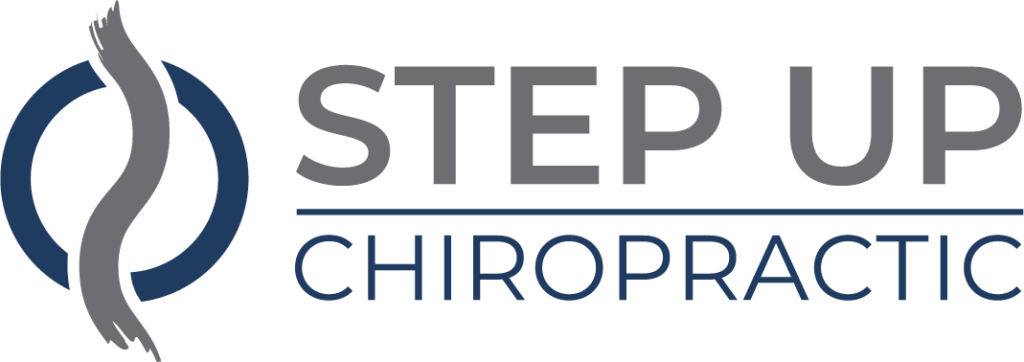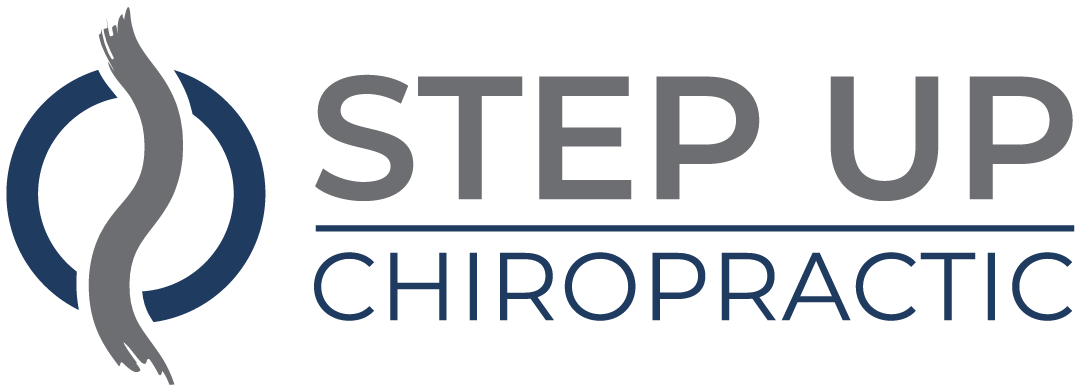When you're dealing with back pain, it's essential to understand why certain adjustments work better than others. These tailored interventions focus on your specific spinal misalignments, aiming to restore balance and alleviate discomfort. By considering factors like nerve interference and muscle tension, a personalized approach can greatly enhance your overall well-being. But what makes these adjustments truly effective? Let's explore the intricate relationship between your spine's alignment and your daily life, shedding light on how small changes can lead to profound benefits.
Understanding Back Pain Causes
Understanding the causes of back pain is essential for finding effective relief. Back pain can stem from a variety of sources, and knowing what's at play in your body allows you to address it more successfully.
One common cause is muscle strain. If you've lifted something heavy or twisted awkwardly, your muscles may have become overstretched or torn, leading to discomfort.
Another factor is poor posture. If you spend long hours slumping at a desk or hunching over your phone, the strain on your spine can result in persistent pain.
Then there are conditions like herniated discs or degenerative disc disease, which can cause sharp pain as the cushioning between your vertebrae weakens or bulges.
In addition, arthritis can contribute to back pain, particularly in older adults. As joints become inflamed, they can lead to stiffness and discomfort.
Stress and emotional factors can also play a role; when you're anxious or stressed, your body tends to tense up. This tension can exacerbate existing pain or lead to new aches.
Lastly, lifestyle choices such as lack of exercise, obesity, and smoking can negatively impact your back. Weak muscles and extra weight put additional strain on your spine.
Role of Chiropractic Care
Chiropractic care offers effective techniques for relieving back pain through targeted adjustments.
By focusing on spinal alignment, these treatments not only alleviate discomfort but also promote overall health.
You'll appreciate the personalized treatment plans tailored to your specific needs, ensuring a more effective path to recovery.
Techniques for Pain Relief
Seeking relief from back pain often leads individuals to explore various treatment options, and many find chiropractic care to be a highly effective choice. Chiropractic techniques focus on restoring function and alleviating pain through hands-on spinal manipulation and other manual therapies. These adjustments target the underlying causes of discomfort, rather than just masking the symptoms.
One common technique you might experience is spinal manipulation, where the chiropractor uses controlled force to improve spinal motion and physical function.
Another approach is mobilization, which involves gently stretching and moving the affected joints to enhance range of motion. Your chiropractor may also incorporate soft tissue techniques, such as massage or myofascial release, to reduce muscle tension and promote healing.
In addition to these hands-on methods, chiropractors often provide guidance on exercises and stretches tailored specifically for you. These can help strengthen your back and core muscles, providing added support to the spine.
Spinal Alignment Benefits
Achieving ideal spinal alignment is fundamental for overall health and well-being. When your spine is properly aligned, it helps your nervous system function effectively, reducing stress on your body.
This alignment can alleviate discomfort and enhance mobility, allowing you to move freely and engage in daily activities without pain.
Chiropractic care plays an important role in maintaining spinal alignment. Through targeted adjustments, a chiropractor can realign your vertebrae, addressing misalignments that may cause nerve interference.
This process not only relieves back pain but can also improve your posture and balance, contributing to better physical performance.
You mightn't realize it, but spinal alignment can also impact your mood and energy levels. A well-aligned spine supports healthy blood flow and nerve function, which can lead to increased energy and a more positive outlook.
Additionally, proper alignment reduces the risk of injuries by promoting better body mechanics.
Personalized Treatment Plans
Your journey to alleviating back pain can greatly benefit from a personalized treatment plan tailored to your unique needs. Chiropractic care isn't one-size-fits-all; it's crucial to address the specific factors contributing to your discomfort.
A customized approach not only enhances the effectiveness of treatment but also promotes long-term wellness.
Here are three key components of a personalized treatment plan:
- Comprehensive Assessment: Your chiropractor will conduct a thorough evaluation, considering your medical history, lifestyle, and specific symptoms. This helps identify the root cause of your back pain.
- Individualized Adjustments: Based on the assessment, your chiropractor will determine the most suitable adjustments for you. This could involve spinal manipulation, soft tissue therapy, or other techniques designed to relieve your pain and improve mobility.
- Ongoing Monitoring: Your progress will be closely monitored, allowing for adjustments to your treatment plan as needed. This guarantees you're always on the most effective path toward recovery.
Benefits of Physical Therapy
Physical therapy offers effective pain relief techniques that can help you manage your back pain more comfortably.
By focusing on strengthening your core muscles, you'll not only alleviate discomfort but also enhance your overall stability.
Let's explore how these benefits can improve your daily life.
Pain Relief Techniques
When it comes to managing back pain, few approaches are as effective as physical therapy, which combines targeted exercises with expert guidance.
This method not only helps alleviate pain but also promotes long-term recovery and improved mobility.
You'll find that physical therapy offers several key benefits, including:
- Personalized Treatment Plans: Your therapist will assess your specific condition and craft a tailored program that addresses your unique needs, ensuring a more effective recovery process.
- Pain Management Techniques: Physical therapists employ various modalities such as heat, ice, and electrical stimulation, which can considerably reduce pain levels and enhance your overall comfort during recovery.
- Education and Prevention: You'll learn about proper body mechanics and ergonomics, equipping you with the knowledge to prevent future injuries and maintain a healthier back.
Strengthening Core Muscles
Strengthening core muscles plays an essential role in managing back pain and enhancing overall stability. When your core is strong, it supports your spine and reduces the strain on your back muscles. This support helps prevent injuries and alleviates existing pain. Engaging in targeted exercises can improve your balance, posture, and coordination, which are vital for daily activities.
Physical therapy often includes core strengthening routines tailored to your specific needs. These exercises focus on activating your abdominal, pelvic, and lower back muscles, creating a robust foundation for your body. As you build strength in these areas, you'll notice an improvement in your ability to perform tasks without discomfort.
Incorporating core strength training into your routine doesn't have to be overwhelming. Simple exercises like planks, bridges, and pelvic tilts can make a significant difference. You'll not only feel stronger but also gain confidence in your movements.
Importance of Ergonomic Adjustments
Creating a comfortable workspace is essential for preventing and alleviating back pain. When you spend hours sitting at a desk or using a computer, your posture and the ergonomics of your setup can greatly impact your overall comfort and well-being.
By making ergonomic adjustments, you can create an environment that supports your body and reduces strain on your back.
Here are three key adjustments you can make:
- Chair Height: Make sure your chair is at the right height so your feet rest flat on the floor. Your knees should be at a 90-degree angle, preventing pressure on your lower back.
- Monitor Position: Position your monitor at eye level, about an arm's length away. This alignment helps maintain a neutral neck position, reducing strain as you look at the screen.
- Keyboard and Mouse Placement: Keep your keyboard and mouse close enough to avoid reaching. Your elbows should be close to your body and at a 90-degree angle to minimize shoulder tension.
Lifestyle Changes for Relief
Making simple lifestyle changes can greatly alleviate back pain and improve your overall well-being. Start by focusing on your posture. Whether you're sitting, standing, or walking, maintaining a neutral spine can reduce strain on your back.
Invest in a supportive chair and make sure your workstation is ergonomically designed to encourage good posture.
Regular physical activity is another crucial component. Aim for low-impact exercises, like swimming or walking, which can strengthen your back muscles without adding stress.
Incorporating flexibility exercises, such as yoga or stretching, can also enhance your range of motion and relieve tension.
Don't underestimate the importance of maintaining a healthy weight. Carrying extra pounds puts additional pressure on your spine, so adopting a balanced diet can help you manage your weight effectively.
Focus on whole foods, including fruits, vegetables, lean proteins, and whole grains, to nourish your body.
Additionally, prioritize sleep. A good night's rest is essential for your body to heal and recover.
Choose a mattress that offers proper support, and try to sleep in a position that keeps your spine aligned.
Lastly, stay hydrated. Drinking plenty of water helps maintain the elasticity of your spinal discs and reduces the risk of injury.
Mind-Body Connection
When it comes to managing back pain, the mind-body connection plays an essential role in your healing process. It's crucial to recognize that your mental state can greatly influence your physical condition. By understanding and harnessing this connection, you can enhance your recovery and overall well-being.
Here are three ways you can strengthen the mind-body connection to alleviate back pain:
- Mindfulness and Meditation: Practicing mindfulness helps you become more aware of your body and its sensations. By focusing on your breath and being present, you can reduce stress and tension, which often contribute to back pain.
- Visualization Techniques: Imagine your spine as strong and flexible. Visualizing healing can promote a positive mindset and may accelerate your recovery. Picture yourself engaging in activities that you once enjoyed, and allow that mental imagery to motivate your healing journey.
- Breath Control: Deep, controlled breathing can help ease muscle tension and promote relaxation. When you experience pain, take a moment to breathe deeply. This simple act can signal your body to relax, potentially easing discomfort.
Preventative Measures to Consider
Implementing preventative measures can greatly reduce your risk of developing back pain in the first place. One of the most effective strategies is to maintain good posture, whether you're sitting at a desk or standing. Keep your back straight, shoulders relaxed, and feet flat on the floor. If you work at a computer, position your screen at eye level and use a chair that supports your lower back.
Incorporating regular exercise into your routine is another key preventative measure. Strengthening your core muscles—those in your abdomen, hips, and lower back—provides essential support for your spine. Aim for a mix of aerobic activities, strength training, and flexibility exercises like yoga or Pilates to improve your overall body mechanics.
Don't underestimate the importance of proper lifting techniques. When you lift heavy objects, bend at your knees, not your waist, and lift with your legs while keeping the item close to your body. This reduces strain on your back and minimizes injury risk.
Additionally, be mindful of your sleep position. Sleeping on your side with a pillow between your knees can help maintain spinal alignment. If you sleep on your back, try placing a pillow under your knees for added support.
Lastly, manage your weight through a balanced diet. Excess weight can put extra strain on your back, so maintaining a healthy lifestyle not only benefits your overall well-being but also protects your spine.
Choosing the Right Specialist
Maneuvering the landscape of back pain treatment can be overwhelming, especially with so many specialists available. Choosing the right professional can greatly influence your recovery journey, so it's important to know what to look for.
Here are three key factors to keep in mind when selecting a specialist:
- Qualifications and Experience: Confirm the specialist has the necessary credentials and experience in treating back pain specifically. Look for certifications in chiropractic care, physical therapy, or orthopedic medicine, depending on your needs.
- Treatment Approach: Different specialists may have varying methods for addressing back pain. Some may focus on manual adjustments, while others might emphasize rehabilitation exercises or alternative therapies. It's vital to choose someone whose approach aligns with your preferences and comfort level.
- Patient Reviews and Recommendations: Don't underestimate the power of word-of-mouth. Seek out testimonials from previous patients to gauge satisfaction and effectiveness. You might also want to ask friends or family for recommendations based on their own experiences.
Conclusion
In summary, addressing back pain effectively requires a personalized approach that combines chiropractic care, physical therapy, and lifestyle changes. By understanding the causes of your discomfort and making ergonomic adjustments, you can enhance your quality of life. Don't underestimate the power of the mind-body connection and preventative measures to keep pain at bay. Choosing the right specialist is essential, so take the time to find someone who understands your unique needs and can guide you toward relief.




